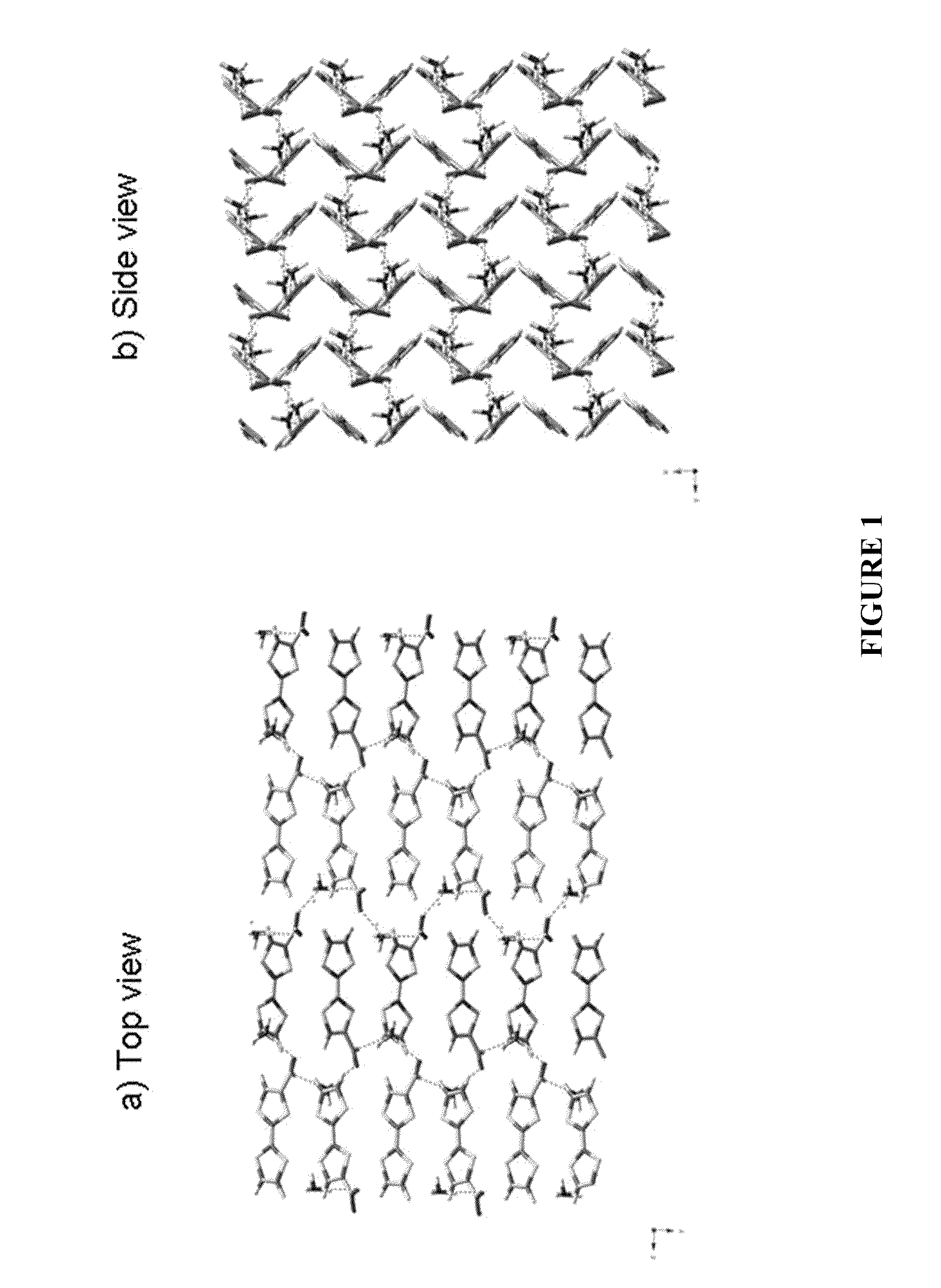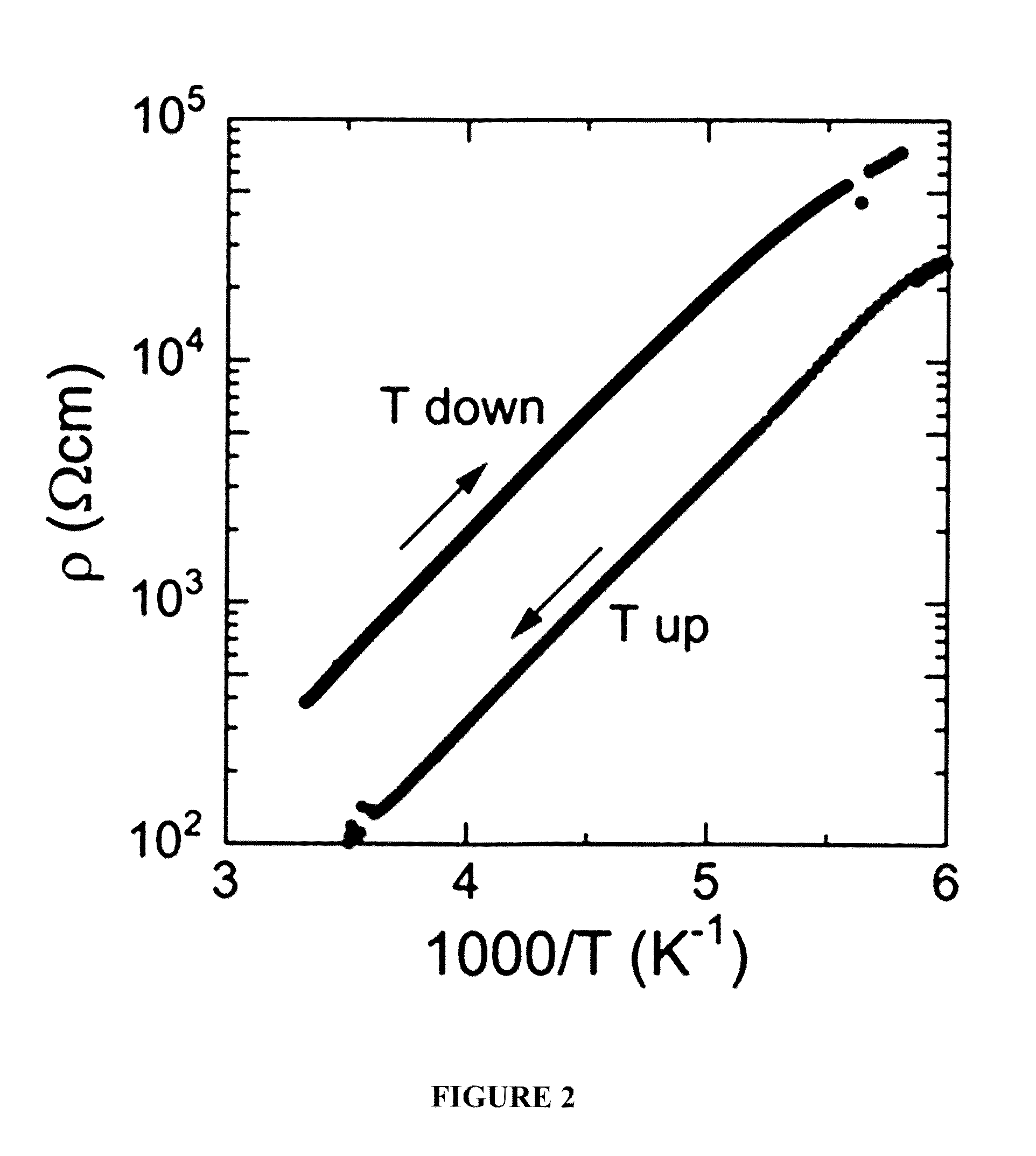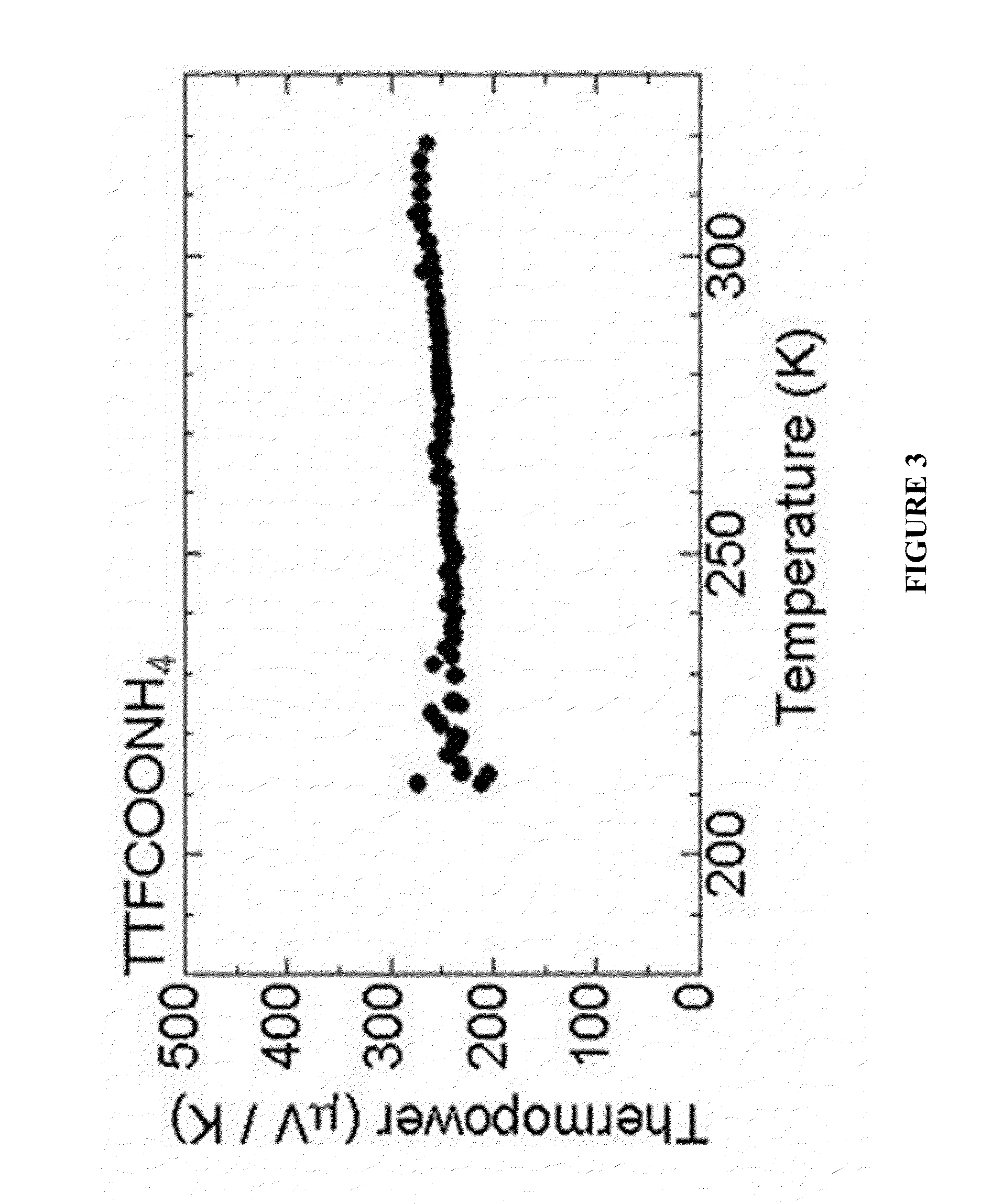Organic semiconductor compound, semiconductor element, solar battery, and process for producing organic semiconductor compound
a technology of organic semiconductors and semiconductor elements, applied in the field of organic semiconductor compounds, can solve the problems of inability to maintain high performance or stability in the processing mode of thin films, and the development of organic semiconductors such as organic amorphous semiconductors and the like is remarkably delayed
- Summary
- Abstract
- Description
- Claims
- Application Information
AI Technical Summary
Benefits of technology
Problems solved by technology
Method used
Image
Examples
Embodiment Construction
[0074]Hereinafter, it will be explained with respect to exemplified embodiments of the present invention in detail while referring to drawings.
[Brief Summary]
[0075]As a result of day-to-day bona fide researches of the present inventors, it was proved that an organic semiconductor can be obtained by a simple technique such as to salt-form a donor molecule with an inorganic acid or an inorganic base. There is a prospect that a variety of organic semiconductors can be produced by similar techniques and this technique is an epoch-making technique. Here, two examples are briefly shown as illustrative embodiments thereof.[0076]1) A tetrathiafulvalene-2-carboxylic acid was obtained by total yield 65% from tetrathiafulvalene (TTF) through two processes and thereafter, the salt was prepared by a 28% aqueous ammonia solution and a 1:1 ammonium tetrathiafulvalene-2-carboxylic acid salt which is pure at the element analysis level was obtained.
[0077]Electrical conductivity when pelletizing the o...
PUM
| Property | Measurement | Unit |
|---|---|---|
| electrical conductivity | aaaaa | aaaaa |
| Electrical conductivity | aaaaa | aaaaa |
| thickness | aaaaa | aaaaa |
Abstract
Description
Claims
Application Information
 Login to View More
Login to View More - R&D
- Intellectual Property
- Life Sciences
- Materials
- Tech Scout
- Unparalleled Data Quality
- Higher Quality Content
- 60% Fewer Hallucinations
Browse by: Latest US Patents, China's latest patents, Technical Efficacy Thesaurus, Application Domain, Technology Topic, Popular Technical Reports.
© 2025 PatSnap. All rights reserved.Legal|Privacy policy|Modern Slavery Act Transparency Statement|Sitemap|About US| Contact US: help@patsnap.com



